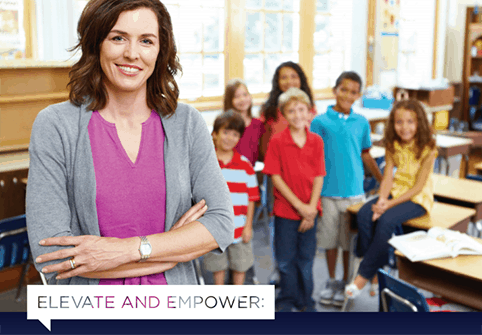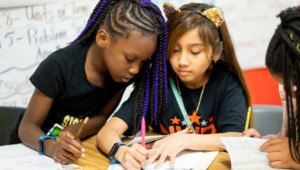Using Exploratory Projects, Minecraft and Storytelling for Personalized World Language Learning

Elevate and Empower outlines a number of important ways that world languages teachers are taking the lead in the shift toward blended and competency-based learning. In the paper, we outlined a number of key strategies world languages teachers are using to move in this direction, including bottom-up adoption of technology, the use of personalized media, and a greater emphasis on cultural fluency.
In my Latin courses, I’ve been experimenting with many of these strategies, as all of our World Languages programs have embraced a heavier focus on cultural fluency (and the necessary social-emotional skills), beside the usual emphasis on linguistic fluency. To my mind, approaching cultural fluency implies focusing on the people who use a particular language and working toward an understanding of how they think, in addition to learning the language itself. In other words, the language itself isn’t our focus; rather, it’s a tool by which we’ll study the people who used it to communicate within their community.
We’ve been redesigning our 7th-grade Latin IA curriculum in this way, while also embracing a blended learning model. Our course structure has been “gamified,” to an extent, in that each unit is treated as a “level” that students must master, before moving on to the next level. Each level is divided into linguistic and cultural components that emphasize process over outcome. Doing so allows students to learn from their mistakes by retaking quizzes as much as they’d like at their convenience.
While the nature of grades and the school calendar prevent us from fully gamifying the Latin IA curriculum with student-paced levels, I’ve been quite pleased by the degree of student-driven learning and self-efficacy I’ve observed, when kids take initiative to repeatedly review and retake quizzes, until achieving a desired level of mastery. Kids quickly learn that it’s the effort that makes a difference.
Culture is investigated in each level through various digital projects that explore how the Romans lived and interacted with each other, while reinforcing grammatical concepts. For example, students begin the year by exploring Roman geography using Google’s My Maps and ask questions about how geography affects how people living in the Roman world spread ideas. We make infographics with Piktochart to describe various aspects of our daily life, depending on what kind of person we thought we would have been if living 2000 years ago. Using Minecraft and SketchUp we examine how Romans made use of architecture and engineering to construct shared space and ask how these spaces shaped our interaction.
Our students build individual projects, but we do so collaboratively, such that each student is constructing a particular component within the overall community. One student builds a Roman villa in Minecraft, another constructs the aqueduct, and others build the roads, bathhouses, etc. In this way, students are personalizing their work, while also creating it within a classroom community. Additionally, we are leading the bottom-up adoption of technology at our school by creating models for other programs to consider.
Thanks to increased emphasis on content, among other things, it’s often the case that our 9th-grade courses offer fewer opportunities to explore course ideas with the kinds of project work done in 7th grade. In considering how to rebuild the Latin II curriculum around more student choice and digital media and connect it with Latin IA without repeating work kids have already done, I’ve decided to focus on storytelling. In our project work this year, we’ll explore what makes a great story and how story offers the power to connect people. Kids will work on a single digital story composed in Latin spanning the academic year, and each story will somehow connect with other stories told by our kids, perhaps focusing on a single historical event (e.g., the eruption of Pompeii or the assassination of Caesar). As we tell our stories to each others, I hope we’ll learn to appreciate multiple points of view that include our own perspective, as well as those different from our own.
For more blogs by Moss, check out:
- Building Stronger Innovation-Minded Educators with The Teachers Guild
- SXSWedu: Design Thinking, Learning, and Teaching
- Why Does World Language Study Matter?
Stay in-the-know with all things EdTech and innovations in learning by signing up to receive the weekly Smart Update.




0 Comments
Leave a Comment
Your email address will not be published. All fields are required.